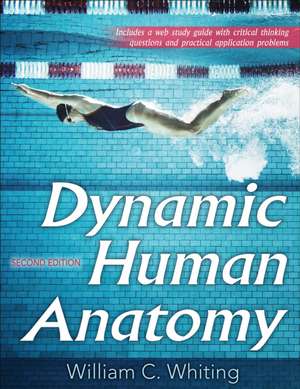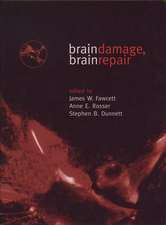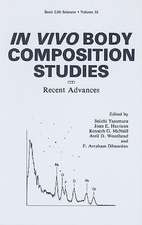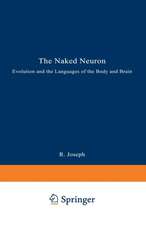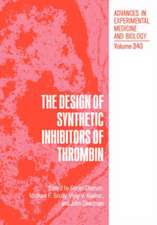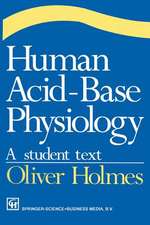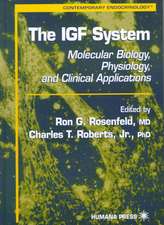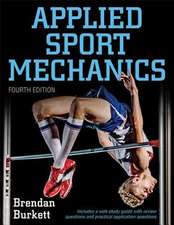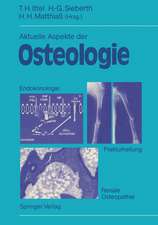Dynamic Human Anatomy
Autor William C. Whitingen Limba Engleză Paperback – 23 mai 2018
Dynamic Human Anatomy, Second Edition With Web Study Guide, is back--with a new title, significant new material and learning aids, and the same goals: to cover concepts not found in traditional anatomy texts and to help students apply those concepts.
Formerly titled Dynatomy, the new edition of this introductory to upper-level biomechanics and anatomy text sets itself apart from other texts in this field by connecting biomechanical principles with applications in sports and dance, strength training, work settings, and clinical settings. Dynamic Human Anatomy offers applied dance- and sport-specific information on how the body performs dynamic movement, providing students an understanding of the body's structure and function as it explores the elegance and complexity of the body's functional movement anatomy.
New Tools and Learning Aids
Dynamic Human Anatomy comes with many tools and learning aids, including a web study guide and new instructor resources, each featuring new material and tools.
The web study guide offers the following:
- Tables that indicate articulations for the spine and upper and lower extremities
- Tables that list the origin, insertion, action, and innervation for all major muscle groups
- Practice problems that allow students to apply the muscle control formula discussed in chapter 6
- Critical thinking questions
The instructor resources include:
- A presentation package with slides that present the key concepts from the text and can be used for class discussion and demonstration
- An image bank that includes the figures and tables from the book to develop a custom presentation
- An instructor guide that includes a sample syllabus, chapter summaries, lecture outlines, ideas for additional assignments, and answers to the critical thinking questions presented in the web study guide
- A test package that includes 330 questions
Dynamic Human Anatomy also offers a full-color design and learning aids that include an updated glossary, chapter objectives, summaries, and suggested readings. Each chapter has Applying the Concept sidebars, which provide practical examples of concepts, and Research in Mechanics sidebars, which highlight recent research in biomechanics and human movement.
Organized Into Four Parts
Dynamic Human Anatomy is organized into four parts. Part I provides a concise review of relevant anatomical information and neuromechanical concepts. It covers the dynamics of human movement, the essentials of anatomical structure and the organization of the skeletal system. Part II details the essentials of a dynamic approach to movement, including a review of mechanical concepts essential to understanding human movement, the muscle control formula, and topics relevant to movement assessment.
In part III, the focus is on fundamental movements as the chapters examine posture and balance, gait, and basic movement patterns. Part IV explores movement-related aspects for strength and conditioning applications, sport and dance applications, clinical applications, and ergonomic applications.
Brings Anatomy to Life
Dynamic Human Anatomy, Second Edition, explores the potential of the human body to express itself through movement, making it a highly valuable text for students who have taken, or are taking, introductory anatomy and who need a more detailed exposure to concepts in human movement anatomy.
Preț: 591.53 lei
Preț vechi: 768.21 lei
-23% Nou
113.19€ • 118.48$ • 94.21£
Carte disponibilă
Livrare economică 10-24 martie
Specificații
ISBN-10: 1492549878
Pagini: 336
Dimensiuni: 219 x 279 x 19 mm
Greutate: 0.94 kg
Ediția:2
Editura: MG – Human Kinetics
Descriere
Dynamic Human Anatomy, Second Edition With Web Study Guide, is back--with a new title, significant new material and learning aids, and the same goals: to cover concepts not found in traditional anatomy texts and to help students apply those concepts.
Formerly titled Dynatomy, the new edition of this introductory to upper-level biomechanics and anatomy text sets itself apart from other texts in this field by connecting biomechanical principles with applications in sports and dance, strength training, work settings, and clinical settings. Dynamic Human Anatomy offers applied dance- and sport-specific information on how the body performs dynamic movement, providing students an understanding of the body's structure and function as it explores the elegance and complexity of the body's functional movement anatomy.
New Tools and Learning Aids
Dynamic Human Anatomy comes with many tools and learning aids, including a web study guide and new instructor resources, each featuring new material and tools.
The web study guide offers the following:
- Tables that indicate articulations for the spine and upper and lower extremities
- Tables that list the origin, insertion, action, and innervation for all major muscle groups
- Practice problems that allow students to apply the muscle control formula discussed in chapter 6
- Critical thinking questions
The instructor resources include:
- A presentation package with slides that present the key concepts from the text and can be used for class discussion and demonstration
- An image bank that includes the figures and tables from the book to develop a custom presentation
- An instructor guide that includes a sample syllabus, chapter summaries, lecture outlines, ideas for additional assignments, and answers to the critical thinking questions presented in the web study guide
- A test package that includes 330 questions
Dynamic Human Anatomy also offers a full-color design and learning aids that include an updated glossary, chapter objectives, summaries, and suggested readings. Each chapter has Applying the Concept sidebars, which provide practical examples of concepts, and Research in Mechanics sidebars, which highlight recent research in biomechanics and human movement.
Organized Into Four Parts
Dynamic Human Anatomy is organized into four parts. Part I provides a concise review of relevant anatomical information and neuromechanical concepts. It covers the dynamics of human movement, the essentials of anatomical structure and the organization of the skeletal system. Part II details the essentials of a dynamic approach to movement, including a review of mechanical concepts essential to understanding human movement, the muscle control formula, and topics relevant to movement assessment.
In part III, the focus is on fundamental movements as the chapters examine posture and balance, gait, and basic movement patterns. Part IV explores movement-related aspects for strength and conditioning applications, sport and dance applications, clinical applications, and ergonomic applications.
Brings Anatomy to Life
Dynamic Human Anatomy, Second Edition, explores the potential of the human body to express itself through movement, making it a highly valuable text for students who have taken, or are taking, introductory anatomy and who need a more detailed exposure to concepts in human movement anatomy.
Notă biografică
Cuprins
Chapter 2. Osteology and the Skeletal System
Chapter 3. Joint Anatomy and Function
Chapter 4. Skeletal Muscle
Chapter 5. Biomechanics
Chapter 6. Muscular Control of Movement and Movement Assessment
Part III. Fundamentals of Movements
Chapter 7. Posture and Balance
Chapter 8. Gait
Chapter 9. Basic Movement Patterns
Chapter 10. Strength and Conditioning Applications
Chapter 11. Sport and Dance Applications
Chapter 12. Clinical Applications
Chapter 13. Ergonomics Applications
